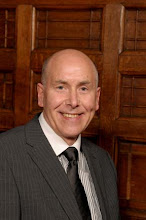Thought I would start sharing my blog on what I'm doing as a West Suffolk District and Town Councillor for Haverhill East:
Week commencing 24th January I Chaired the Haverhill Town Council Planning Working Party with Town Councillors. The 25th I walked round the Chalkstone Estate with Cllr Miller-Jones, knocking on doors and talking to people about the Anti-social behaviour dispersal order the police put into place. In the evening attend the budget Full Town Council meeting at the Arts Centre. On the 27th attended a Zoom meeting with Town Councillor colleagues and friends as a catch-up meeting. Week commencing 31st January attended a West Suffolk District Council Teams meeting with Councillors and officers about an overview of the housing options and homelessness services in West Suffolk. On the 3rd of February attended West Suffolk District Council Labour Group meeting and discussed the Hub in Bury St Edmunds, also Directly Managed Housing. Friday 4th met on Zoom with fellow Labour Party colleagues for the Annual General Meeting.
Looking at West Suffolk District Council's 2022/3 Budget with the on going cuts in government funding that's been happening every year since 2010, the cuts will continue till the next General Election in 2024, with this and on going losses since the outbreak of Covid 19 in March 2020 these are having a dramatic effect on West Suffolk District Council and Haverhill Town Council's finance's. On top of this starting this April staff National Insurance increases from the government will add to the funding increases other than this year for West Suffolk District Council because of a one off government grant, but it will effect Haverhill Town Council, this will either be paid for by the Council taxpayers or Council cuts or even both.
West Suffolk District Council will have to find £1.16 million in 2023 to 2024 in cuts or Council tax increases, with this growing to £2.98 million in 2025 to 2026. Even with the government cutting support to West Suffolk District Council since 2010 currently Council tax only makes up one fifth of the Council's income.

